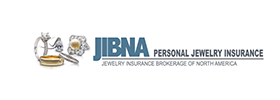There will be trouble. Expect it. Prepare for it.
According to NOAA, on average, 12 tropical storms will form over the Atlantic Ocean, Caribbean Sea, or Gulf of Mexico during the hurricane season which runs from June 1 to November 30 each year. Six will become hurricanes.
In the Central Pacific Ocean, an average of three tropical storms, two of which become hurricanes, form or move over the area during the hurricane season, which runs from June 1 to November 30 each year. During a typical 2-year period, the U.S. coastline is struck by an average of 3 hurricanes, one of which is classified as a major hurricane (winds of 111 mph or greater)
What damage does each category of hurricane cause?
Category 1 – 74-95 mph winds
Don’t take a Cat 1 hurricane lightly. At this wind speed, you may have roof and siding damage. Dead trees will fall; branches will break. Power outages will last for several days.
Prepare: Trim trees, service your generator, make sure you have water, food, and an up to date emergency kit.
Category 2 – 96-110 mph winds.
Downed trees will block roads. Power can be out from days to weeks.
Category 3 – 111-129 mph winds
Expect devastation to buildings. You may lose your roof, gutters and siding. Power will almost certainly be out for at least two weeks. Water will be a problem. Fill bathtubs before the storm to use for flushing toilets and bathing.
Category 4 – 130-156 mph winds
You’ll be evacuated if this storm heads your way. Make plans before hurricane season for a place to stay for a minimum of two weeks. Your house will sustain major structural damage. There will be no water or power. Your pets cannot survive this storm. Make plans to take them with you.
Category 5 – 157 or higher mph winds
Catastrophic. You will be evacuated. After the storm, you will have no place to live. Houses will be reduced to timber. Travel will be impossible for weeks. No water or power for weeks. Not only will you need a place to stay for weeks, you’ll be filing an insurance claim for everything you own. Before the storm, use your smartphone to take a video of your home, room by room. Your pets will not survive this storm. Make plans to take them with you.
Storm surge
Surging waters can be a deadly effect of a hurricane. In Hurricane Katrina in 2005, it was the storm surge that broke levees in New Orleans and caused flooding six to 12 miles from the beach.







































